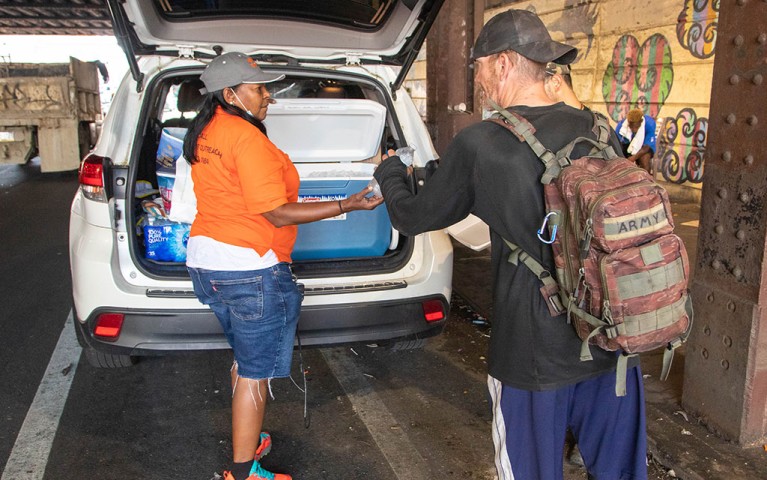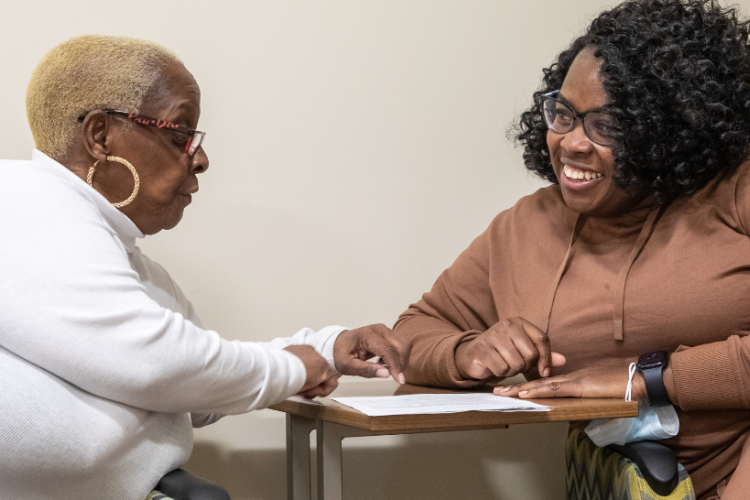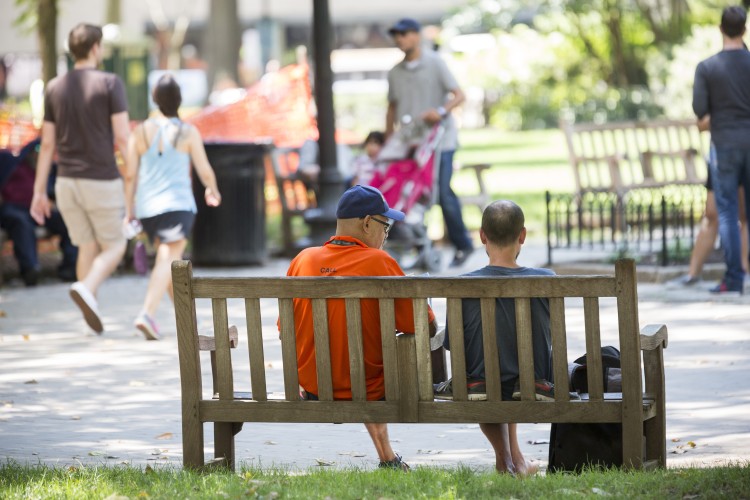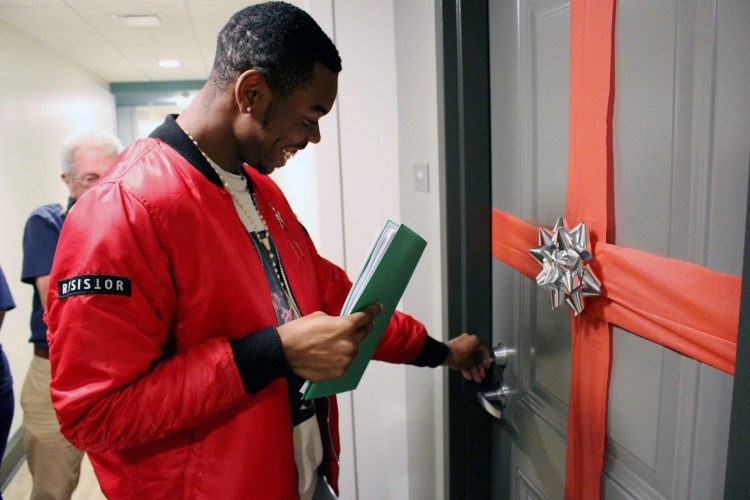Facts on Homelessness

Call the Philadelphia Homeless Outreach Hotline at 215-232-1984 to get help for someone experiencing homelessness.
Homelessness in the United States
Homelessness is increasing in Philadelphia and around the country. According to the U.S. Department of Housing and Urban Development (HUD), more than 771,000 people were homeless on a single night in January 2024. Between 2023 and 2024 homelessness increased by 18.1 percent nationally.
Homelessness in Philadelphia
Between 2023 and 2024, homelessness increased by 9.8 percent in Philadelphia. During the same period, the number of people who were unsheltered increased by 38.2 percent and the number of people who were in sheltered locations—i.e. emergency shelters, safe havens or transitional housing programs—increased by 4.8 percent. Overall, the largest increases in homelessness were observed not only in Kensington and North Philadelphia, but also in Center City and South Philadelphia.
While the annual point-in-time count provides important data on homelessness, it only tells part of the story. Conducted on a single night in January, the PIT count often undercounts people who are hidden from view—those staying in cars, abandoned buildings, or temporarily with friends. Its narrow definition also excludes many adults who are doubled up or couch surfing, even though they lack stable housing.
Because the Point-in-Time count is a snapshot, it doesn’t tell us how many people are homeless over the course of a month or a year. In Philadelphia, for example, the 2024 PIT count recorded nearly 5,200 people who were homeless on a single night, but in FY 2024, more than 15,000 unique individuals, including adults and children, spent at least one night in an emergency shelter, safe haven, or transitional housing in the city.
Homeless Households
Seventy-one percent (71 percent) of people experiencing homelessness in Philadelphia were adults in households without children. The remaining 29 percent of people experiencing homelessness did so as part of a family with at least one adult and one child under 18.
Chronic Homelessness
In January 2024, 1,080 adults were chronically homeless in Philadelphia. Chronically homeless individuals are individuals with disabilities who have either been continuously experiencing homelessness for one year or more or who have experienced at least four episodes of homelessness in the past three years where the combined length of time homeless in those occasions is at least 12 months.
Veterans
In January 2024, 236 veterans were homeless in Philadelphia veterans, representing 4.5 percent adults who were homeless in Philadelphia.
Youth
On a single night in January 2024, 235 people under the age of 25 in Philadelphia experienced homelessness on their own as an “unaccompanied youth.” Most of these young people were in sheltered locations (75 percent) and most of them (96.5 percent) were between the ages of 18 and 24.
What Causes Homelessness?
For most of us homelessness isn’t caused by a mental illness or even a substance use disorder. It’s a housing problem, caused by a critical shortage of affordable housing. According to the National Low Income Housing Coalition (NLIHC) there were only 35 rental homes that are affordable and available for every 100 extremely low-income households in 2024. The result? A nationwide shortage of 7.1 million rental homes that are both affordable and available for renters with extremely low incomes.
In Pennsylvania, the picture is slightly better but not much. According to the most recent data, only 40 rental homes are affordable and available for every 100 renters in Pennsylvania with extremely low incomes. A full-time worker would have to earn $27.83 per hour to afford a modest two-bedroom apartment—a rate that is far higher than the minimum wage of $7.25. In 2025, the maximum SSI payment for an individual in Pennsylvania was $967 per month but the average fair market rent for a one-bedroom apartment in Philadelphia is $1750 per month, and most people don’t receive the maximum payment.
The U.S. Department of Housing and Urban Development (HUD) classifies households as cost burdened when they’re spending 30 percent or more of their income on housing including rent, mortgage payments and utilities. In Philadelphia, 40 percent of all households are cost burdened and a staggering 22 percent of all households are spending at least 50 percent of their income on housing, making them severely cost burdened.
The shortage of affordable housing is particularly severe for low-income households. There are almost twice as many households with incomes under $30,000 in Philadelphia as there are affordable housing units. When families are precariously housed, an unexpected financial shock, such as a loss of work, an expensive car repair or a spike in rent can lead to an eviction and homelessness. While middle-income households are facing a shortage of moderately priced housing, only 12 percent of households with incomes of $50,000 or more are cost burdened in Philadelphia. Among households earning $100,000 or more, that figure drops to 1 percent. Now more than ever we need to ensure that households with the lowest incomes are able to find housing that they can afford.
What about Mental Illness and Substance Use?
An untreated mental illness or substance use disorder can make a person more vulnerable to becoming homeless, but those factors alone usually do not cause homelessness. Consider a simple analogy, the childhood game of musical chairs. When there aren’t enough chairs, someone is always left standing.
Now imagine trying to play the game with a broken leg, or perhaps a serious mental illness or a substance use disorder. An injury or an illness can make it harder to compete, but it’s the shortage of chairs (not the injury itself) that ultimately leaves someone without a seat at the end of the game. When there aren’t enough affordable homes, someone will always be left without housing, regardless of their effort, personal circumstances, or individual vulnerabilities.
Together We Must:
- Expand access to affordable housing and supportive services for persons who are homeless or at risk of homelessness.
- Strengthen renter protections and provide emergency rental assistance for all income-eligible households.
- Expand voluntary access to low-barrier health care, including primary care, mental health care and behavioral health care.
- Oppose the criminalization of homelessness and respond to encampments with proven solutions.
- Improve the effectiveness and impact of our homelessness response system through increased coordination and planning.
This is OUR city, Philadelphia. We all deserve a chance to realize our potential and we have the solutions to make that happen in every neighborhood in this great city. The time is now for Philadelphia to lead by example.


